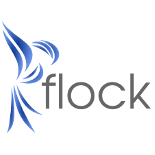After a rousing introduction by Fedora Project Leader (FPL) Matthew Miller, Flock kicked off with a keynote by journalist Gijs Hillenius. In the keynote, Hillenius discussed free and open source adoption in European public institutions.
The title of the keynote, “Free and Open Source Software in Europe: Policies & Implementations” was slightly misleading – Hillenius only discussed public/governmental adoption of FOSS, and didn’t really discuss corporate adoption or use by individuals. This is not surprising, Hillenius focuses on use of open source for public administrations for the Open Source Observatory and Repository (OSOR). Still, he provided an interesting picture of adoption by public European institutions.
Big Trends and Visible Implementations
Overall, Hillenius says that government use of open source is on the rise. He specifically pointed to the Gendarmerie in France, government in Spain (Extramadura), and Munich adopting the Linux desktop and LibreOffice. For instance, the Gendarmerie report an eye-popping 72,000 Linux desktops with LibreOffice.
Hillenius also pointed to a number of other government uses of open source, though much of the focus was on desktops, file formats, and so on. One suspects the picture is even rosier if you look at Linux on the server and server applications.
It is such a trend, says Hillenius, that government/public agencies are no longer annonucing that they’re moving to open source solutions – because it’s no longer newsworthy.
One thing Hillenius shared that I hadn’t heard about before is the European Union Public License (EUPL) a forked version of the GPL suggested for use in the EU that’s translated into all of the languages of the European Union (except Gaelic).
Challenges for FOSS
Though open source is on an upward trend in the EU, it’s not all hugs and puppies. Hillenius says there’s several challenges for open source adoption that continue to be a problem in the EU.
First, he notes that while there are prominent politicians in favor of open source, there are still too few of them. Many politicians are uninterested in the issues around open source, if not actively opposed to open source adoption. Too many, he says “glaze over” when the topic comes up.
Secondly, the desktop is still a challenge for open source. Even the European Commission admits that it’s locked into the proprietary desktop, says Hillenius.
Another major issue is procurement processes. About one in five requirements used for procurements specifically mentions Oracle, SAP, or Microsoft – even though they’re not supposed to request specific solutions but instead request feature requirements.
Finally, on the contribution front, Hillenius says that even organizations that are using open source are “shy” about contributing to open source projects and releasing their own projects as open source. This is despite thorough research and “no objections” by the European Commission. He did point out a few notable projects that had been released for use by other government agencies, etc., but it sounds like EU public agencies are reluctant to dive in beyond use of FOSS.
He also noted that it’s not uncommon for administrations to ignore guidelines on document formats, or for IT departments to refuse to start a pilot for FOSS technologies even when directed to do so by an administration. In other words, open source adoption is still hampered in the EU by the same cultural and commercial factors that hamper adoption around the world..
Despite the challenges, though, open source is still making steady progress in the EU. Not as fast as we might hope, and there’s a lot of room for improvement, but the overall picture painted by Hillenius is good.





